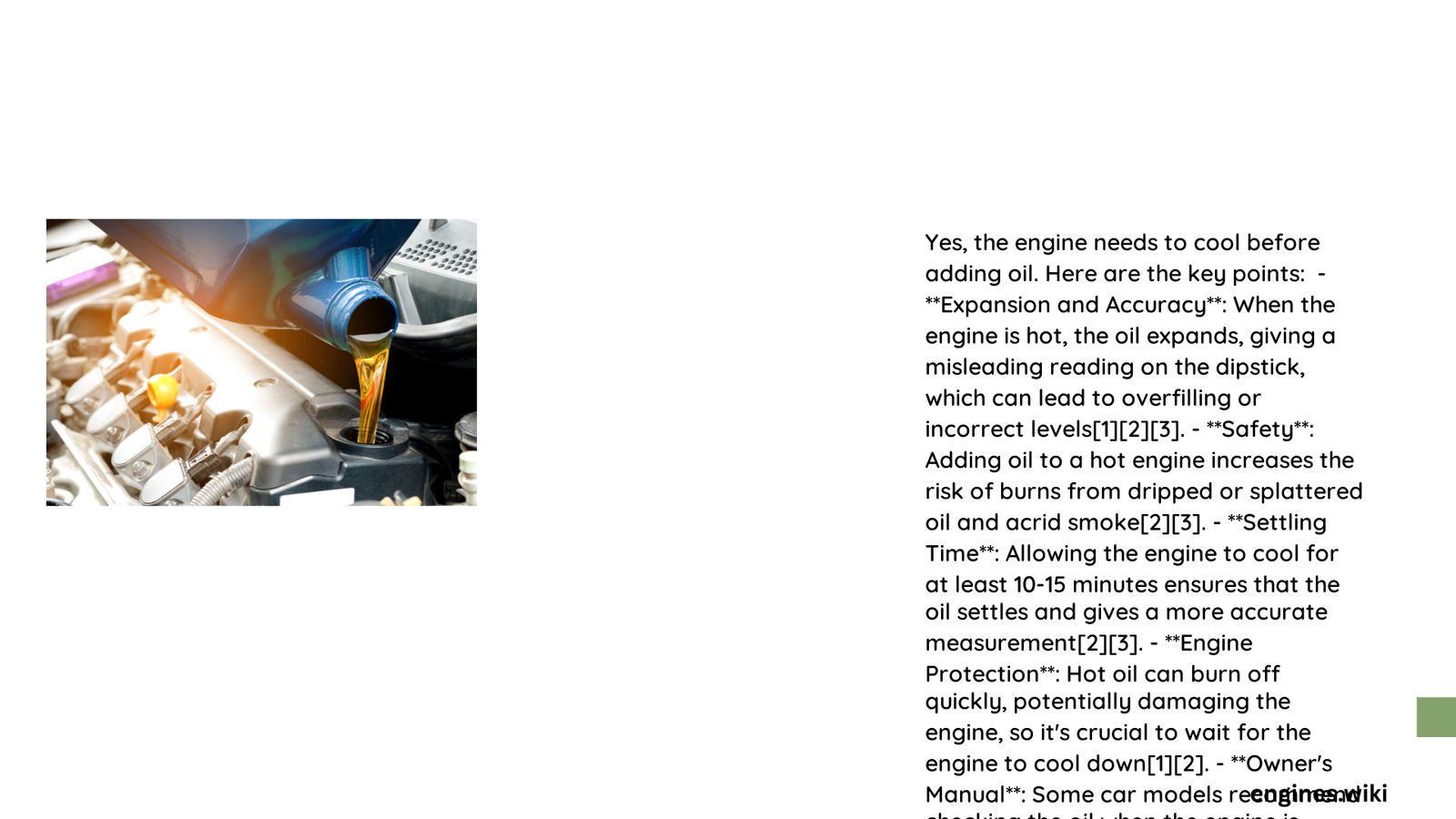When it comes to maintaining your vehicle’s engine, understanding the nuanced process of adding oil is crucial. Many vehicle owners wonder about the optimal temperature and conditions for oil addition, seeking to prevent potential damage and ensure proper engine lubrication. This comprehensive guide will explore the critical aspects of engine cooling and oil management, providing precise insights into whether an engine needs to cool before adding oil.
Why Temperature Matters When Adding Oil?
What Happens to Oil at Different Temperatures?
Engine oil behaves differently across various temperature ranges, which significantly impacts its performance and protective capabilities. Here’s a detailed breakdown:
| Temperature Range | Oil Behavior | Potential Risks |
|---|---|---|
| 0-80°C | Thick, Sluggish | Poor Circulation |
| 80-110°C | Optimal Viscosity | Ideal Lubrication |
| 110-150°C | Thinning Rapidly | Potential Degradation |
How Long Should You Wait Before Adding Oil?
Experts recommend following these guidelines:
- Wait Period:
- Allow 10-15 minutes after engine shutdown
- Ensure engine surface is touchable without burning
-
Verify engine is on a level surface
-
Temperature Considerations:
- Ideal oil addition temperature: 50-70°C
- Avoid adding oil when engine is extremely hot
- Prevent thermal shock to engine components
Risks of Adding Oil to Hot Engine

Can Immediate Oil Addition Cause Damage?
Adding oil to an extremely hot engine can lead to several potential problems:
- Oil Oxidation: Accelerated chemical breakdown
- Viscosity Reduction: Compromised lubrication properties
- Potential Seal Damage: Thermal expansion risks
What Are Safe Oil Addition Practices?
Recommended Steps:
- Park vehicle on flat, level ground
- Turn off engine
- Wait 10-15 minutes
- Check oil level using clean dipstick
- Add oil slowly and carefully
- Use funnel to prevent spillage
Technical Insights on Engine Oil Temperature
What Do Professional Mechanics Recommend?
Professional mechanics emphasize understanding your specific vehicle’s requirements. While general guidelines exist, factors like:
- Engine type
- Ambient temperature
- Vehicle age
- Oil viscosity
All play crucial roles in determining the optimal oil addition procedure.
Practical Tips for Safe Oil Management
How to Ensure Proper Oil Maintenance?
- Regular Checks:
- Monitor oil levels monthly
- Use high-quality oil appropriate for your vehicle
-
Follow manufacturer’s recommended service intervals
-
Temperature Awareness:
- Invest in an infrared thermometer
- Learn your engine’s typical operating temperature
- Understand oil viscosity characteristics
Common Misconceptions
What Should You Avoid?
- Never add oil immediately after driving
- Avoid checking oil when engine is running
- Do not overfill oil reservoir
Final Recommendations
While there’s no universal rule mandating exact cooling time, allowing your engine to cool for approximately 10-15 minutes provides the safest environment for oil addition. Always prioritize safety and follow your vehicle manufacturer’s specific guidelines.
Pro Tip
Consider keeping a log of your oil changes, noting temperature and conditions to develop a personalized maintenance strategy.
